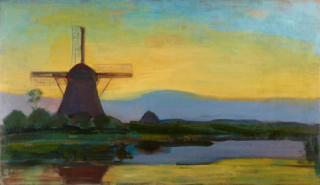«Щоб наблизитися до духовного в мистецтві, потрібно якомога менше використовувати реальність, тому що реальність протистоїть духовному». – Піт Мондріан.
Пітер Корнеліс Мондріан був нідерландським художником, який, можливо, найбільш відомий як один із засновників мистецького руху De Stijl, який працював навколо абстрактних творів і нових форм мистецтва, які були представлені світу на початку 20 століття. Рух також базувався на редуктивній теорії; який взяв більший масштаб зображення і оживив його на полотні, в архітектурних творах, у скульптурних формах, а також у формі графіки.
Піт Мондріан відвідав Rijksadame van Beeldende в Амстердамі. Він виріс у часи жвавого розвитку мистецтва. У рік свого народження, у Франції, Клод Моне написав картину «Враження» «Схід сонця», яка викликала найбільший резонанс у світі мистецтва з часів Відродження.
Коли Мондріану було 12 років, Жорж Сьора почав малювати крапками чистого кольору, а не змішувати кольори на своїй палітрі. Через шість років співвітчизник Мондріана, Вінсент Ван Гог, застрелився на кукурудзяному полі, а через 12 років після цього Пабло Пікассо намалював «Авіньйонських дівчат» — твір, який глибоко вплинув на живопис і на те, як художники сприйняли себе.
Піт Мондріан зацікавився технікою імпресіонізму та цією формою мистецтва з ранніх своїх робіт. Як і Ван Гог, Мондріан використовує чисті, сяючі кольори та виразний мазок під впливом пуантилізму та фовізму.
Натюрморти, ландшафтний дизайн та інші сцени, які він зображував на початку своєї кар’єри, всі зображували цей стиль, хоча його палітри в цей період більше схожі на охристі, червоно-коричневі та коричневі на картинах Рембрандта.
У першому десятилітті 20 століття Піт Мондріан почав змінювати свій стиль. Його роботи починають рухатися до стилю пуантилізму та кубізму, а також до інших абстрактних засобів, якими він займався на цьому ранньому етапі своєї кар’єри. У той час нідерландські художники все більше знали про радикальні роботи Поля Сезанна та художників-кубістів.
Активний в авангардних колах, Мондріан був під великим впливом нового мистецького руху, що відбувався в Парижі. У 1911 році він вперше побачив ранні кубістичні роботи Пабло Пікассо. Він був глибоко вражений. Майже одразу він почав використовувати концепцію кубізму для власного використання, про що свідчать дві версії «Натюрморту з імбирним горщиком», виконані протягом зимових місяців 1911-1912 років. У першій версії об’єкти представлені як впізнавані форми з повсякденного життя; у другому — він перетворював ті самі об’єкти на композиційні структури, просуваючись до абстракції далі, ніж будь-коли раніше.
Влітку 1914 року Піт Мондріан повернувся до Нідерландів, щоб відвідати свого батька, який був важко хворим, і початок Першої світової війни не дозволив йому повернутися до Парижа. У цей період, коли він був вдома, він вирішив працювати над формою абстрактного мистецтва, яка пізніше була класифікована як неопластичний стиль.
Твори, які він створив у цей період, зображувалися світлішими кольорами, спрощеним вибором кольорів і збалансованими формами в композиціях. Він також розробив роботу, яка заглибилася в духовну сферу та створила більший зв’язок з релігією та його вірою, на відміну від попередніх робіт, які не були зосереджені на цьому пункті.
Коли війна підійшла до кінця, Піт Мондріан вирішив повернутися до Парижа; після прибуття він почав працювати з Тео ван Досбургом, а також з іншими відомими художниками в цьому регіоні, і саме тоді вони розвинули рух De Stijl, те, чим Піт Мондріан найбільш відомий протягом своєї великої кар’єри. Група була створена в 1917 році, і вона поширила естетичні принципи на архітектуру, скульптуру, полотно та графічний дизайн, яким слідував Піт Мондріан.
Через розбіжності з ван Дусбургом щодо використання діагональних ліній у живописі та мистецтві Піт Мондріан вирішив залишити групу та розпочати роботу над новими рухами та новими формами мистецтва, до яких він насправді не входив у минулому.
У 1926 році Кетрін Драйєр, співзасновниця Товариства незалежних художників Нью-Йорка (разом з Марселем Дюшаном і Ман Реєм), відвідала студію Піта Мондріана в Парижі та придбала одну з його діамантових композицій «Картина I». Потім це було показано під час виставки, організованої Товариством незалежних художників у Бруклінському музеї – першої великої виставки сучасного мистецтва в Америці після Armory Show.
Драєр зазначив у каталозі, що «Голландія випустила трьох великих художників, які, хоч і були логічним вираженням своєї власної країни, піднялися над нею завдяки силі своєї особистості: перший — Рембрандт, другий — Ван Гог, а третій — Мондріан. ”.
У 1931 році Піт Мондріан приєднався до лінії Abstraction-Creation, яка була більш відкритою для нових стилів, нових технік і різниці в стилях роботи, яку створюватимуть художники. У 1932 році велика ретроспективна виставка робіт Мондріана була проведена в музеї Стеделійк на честь 60-річчя художника. Приблизно в цей час художник почав захоплюватися ідеєю лінії та демонтажу самого визначення живопису. Малюнок і креслярська майстерність, прикладом яких є лінія, стверджував він, завжди лежали в основі живопису, від художників епохи Відродження до імпресіоністів і модерністів, і ніхто ніколи не думав оскаржувати це.
Коли почалася Друга світова війна, Піт Мондріан вирішив переїхати до Лондона, а потім до Нью-Йорку. У 1942 році відбулася його перша персональна виставка; це було всього за кілька років до його смерті в 1944 році. Робота була представлена у великій галереї в Нью-Йорку, і її прийняли відвідувачі, а також його колеги у світі мистецтва.
Крім того, що він був відомим художником і засновником різних мистецьких груп і реформ, Піт Мондріан також написав кілька творів протягом своєї кар’єри. Він опублікував багато з цих творів. Його твори стосувалися неопластицизму та того, як змінилася форма мистецтва, а також абстрактної роботи загалом. Протягом свого життя він опублікував ряд теоретичних текстів, які були опубліковані в різних журналах та інших мистецьких статтях протягом його кар’єри.
Мондріан назвав свій стиль неопластикою або «новим пластичним живописом». Мондріан використовує термін «пластик» для позначення пластичних мистецтв — таких засобів масової інформації, як скульптура, яка формує тривимірну форму, або, у випадку Мондріана, малювання на полотні.
Століттями європейські художники намагалися відобразити тривимірні форми в правдоподібних просторах, створюючи переконливі ілюзії реальності. Дивіться, наприклад, «Дівчина з перловою сережкою» Йоганнеса Вермеєра. Навпаки, Мондріан та інші модерністи хотіли вивести живопис за межі натуралістичного зображення, щоб зосередитися замість цього на матеріальних властивостях фарби та її унікальній здатності абстрактно виражати ідеї за допомогою формальних елементів, таких як лінія та колір.
Мондріан вважав, що його абстракція може служити універсальною образною мовою, що представляє динамічні, еволюційні сили, які керують природою та людським досвідом. Можливо, тому Мондріан характеризував свій стиль як «абстрактно-реальний» живопис.
Піт Мондріан не тільки є лідером у прогресивних стилях і змінах у формі, але він також добре відомий у всьому світі завдяки тому, що його роботи публікуються по всьому світу, і що так багато його відомих творів зберігаються в різних частин світу. Він працював у кількох галереях Нью-Йорка, включаючи першу відкриту виставку, яку він зробив лише за кілька років до своєї смерті.
Окрім робіт, представлених у Нью-Йорку, є також роботи, що зберігаються в Національній галереї мистецтв у Вашингтоні, округ Колумбія. За межами США його роботи також демонструються в Парижі, Швейцарії, Амстердамі та в багатьох інших музеях і на виставках по всьому світу.
Завдяки своїй привабливості різними формами та здатності створювати роботи, які зворушили багатьох, Піт Мондріан є одним із відомих художників, які почали свою творчість на початку 20 століття. Незважаючи на те, що він народився за межами США, він зрештою потрапив у західний світ і зміг стати досить відомим сам по собі завдяки якості та стилям, які він прийняв у своїй роботі.
Він відомий не лише як відомий художник-абстракціоніст у США, але й у своєму рідному місті в Амстердамі та в Парижі, де він коротко побував, щоб дізнатися про різні форми та художників, якими він цікавився. Паризька студія Мондріана, який він заснував для створення одних із найкращих мистецьких перлин, став культовим, що служить натхненням для сучасних художників.
Точніше, роботи зі стінами, які Мондріан висунув на перший план, ніколи не можна ігнорувати. Галерея “Тейт” у Лондоні зберігає одні з найкращих робіт, створених Мондріаном, експериментуючи з найновішими кольоровими комбінаціями. Можливо, це виявилося головним його активом у пізнішій частині його життя.
Саме одна з його картин під назвою «Композиція з жовтим, синім і червоним» досі заворожує шанувальників мистецтва неповторною свіжістю, яку вона має. Насправді існує незліченна кількість спостережень Піта Мондріана, які, як відомо, легко справляють величезний вплив на художників-початківців.
© Times of U
. . . .
“To approach the spiritual in art, one will make as little use as possible of reality, because reality is opposed to the spiritual”. – Piet Mondrian.
Pieter Cornelis Mondriaan was a Dutch painter who possibly best known as one of the founders of the De Stijl, an art movement worked around abstract works, and the new art forms that were introduced to the world in the early 20th century. The movement was also based on the reductive theory; which took a larger scale image, and brought it to life on the canvas, in architectural works, and in sculpture forms, and in the form of graphic arts as well.
Piet Mondrian attended the Rijksadame van Beeldende in Amsterdam. He grew up during a time of lively developments in art. In the year in which he was born, in France, Claude Monet painted Impression, “Sunrise”, which initiated some of the greatest repercussions the art world had seen since the Renaissance.
When Mondrian was 12 years old, Georges Seurat began painting in dots of pure colour, rather than blending colours on his palette. Six years later, Mondrian’s fellow countryman, Vincent van Gogh, shot himself in a cornfield, and 12 years after that Pablo Picasso painted “Les Demoiselles d’Avignon”, a work that profoundly affected painting and the way in which artists perceived themselves.
Piet Mondrian took an interest in impressionist techniques and this form of art with the early works that he did. Like Van Gogh, Mondrian uses pure, glowing colours and expressive brushwork under the influence of Pointillism and Fauvism.
The still life images, the landscape design work, and other scenes which he depicted in his early career, all depicted this style, although his palettes during this period are more akin to the ochres, russets and browns of Rembrandt paintings.
In the first decade of the 20th century, Piet Mondrian began to make a transition in his style. His works start moving towards a Pointillist and Cubist style, as well as other abstract mediums that he engaged in at this early stage of his career. During that time, Dutch artists were increasingly aware of the radical works of Paul Cezanne and of the Cubist painters.
Active in avant-garde circles, Mondrian was very influenced by the new art movement happening in Paris. In 1911, he saw for the first time the early Cubist works of Pablo Picasso. He was profoundly impressed. Almost immediately he began to adopt the concept of Cubism to his own use, as evidenced in two versions of “Still Life with Gingerpot”, done during the winter months of 1911-1912. In the first version, the objects are rendered as recognizable forms from everyday life; in the second, he transformed the same objects into compositional structures, taking his drive toward abstraction further than he ever had before.
In the summer of 1914, Piet Mondrian returned to the Netherlands to visit his father, who was seriously ill, and the outbreak of World War I prevented him from returning to Paris. During this period, when he was at home, he decided to work on an abstract art form which later on was classified as neoplastic style.
The work which he produced during this period was depicted by lighter colours, simplified colour selection, and forms that were balanced in their compositions. He also developed work that delved into the spiritual realm, and created more of a connection with religion, and his faith, as opposed to the prior works which were not focused on this point.
Once the war had come to a close, Piet Mondrian decided to return to Paris; upon his arrival, he began to work with Theo van Doesburg, as well as other famous artists in the area, and this is when they developed the De Stijl movement, what Piet Mondrian is most well known for during the course of his extensive career. The group was formed in 1917, and it extended the aesthetic principles to architecture, sculpture, canvas, and graphic art design which Piet Mondrian followed.
Upon disagreement with van Doesburg, about the use of diagonal lines in painting and artwork, Piet Mondrian decided to leave the group, and to start to work on new movements, and new forms of art he had not really entered in to in the past.
In 1926, Katherine Dreier, co-founder of New York City’s Society of Independent Artists (along with Marcel Duchamp and Man Ray), visited Piet Mondrian’s studio in Paris and acquired one of his diamond compositions, “Painting I”. This was then shown during an exhibition organized by the Society of Independent Artists in the Brooklyn Museum – the first major exhibition of modern art in America since the Armory Show.
Dreier stated in the catalog that “Holland has produced three great painters who, though a logical expression of their own country, rose above it through the vigor of their personality – the first was Rembrandt, the second was Van Gogh, and the third is Mondrian”.
In 1931, Piet Mondrian joined the Abstraction-Creation line, which was more open to new styles, to new techniques, and to a difference in styles of work, which the artists would create. In 1932, a major retrospective exhibition of Mondrian’s work was held at the Stedelijk Museum, in honour of the artist’s 60th birthday. It was around this time that the painter began to be fascinated with the idea of the line and dismantling the very definition of painting. Drawing and draughtsmanship – exemplified in the line, he argued, had always lain at the heart of painting, from the Renaissance artists to the Impressionists to the Modernists, and no one had ever thought to challenge that.
When World War II began, Piet Mondrian decided to make the move over to London and then to New York. In 1942, he held his first solo exhibit; this was only a few years prior to his death in 1944. The work was presented in a large gallery in New York, and was accepted by visitors, as well as his peers in the art world.
In addition to being famous artist, and founder of different art groups and reforms, Piet Mondrian also wrote a number of pieces during his career. He had many of these pieces published. His writings dealt with Neo-Plasticism and how the art form had changed, and with abstract work in general. He published a number of theoretical texts during the course of his life, and they were published in various magazines and other art articles, during the course of his career. Mondrian called his style Neo-Plasticism or “The New Plastic Painting”, Mondrian uses the term “Plastic” to refer to the plastic arts – media such as sculpture, that molds three-dimensional form, or, in Mondrian’s case, painting on canvas. For centuries, European painters had attempted to render three-dimensional forms in believable spaces – creating convincing illusions of reality. See for example “The Girl with a Pearl Earring” by Johannes Vermeer. In contrast, Mondrian and other modernists wanted to move painting beyond naturalistic depiction to focus instead on the material properties of paint and its unique ability to express ideas abstractly using formal elements such as line and color. Mondrian believed his abstraction could serve as a universal pictorial language representing the dynamic, evolutionary forces that govern nature and human experience. Perhaps this is why Mondrian characterized his style as “abstract real” painting.
Piet Mondrian not only is a leader in progressive styles and change in form, but he is also well known around the world due to the fact that his art work is published around the world, and that so many of his famous pieces are housed in different parts of the world. He has work in several galleries in New York, including the first open one person exhibit that he did, just a few years prior to his death. In addition to work published in New York, there are also pieces that sit in the National Gallery of Art in Washington DC. Outside of the U.S., he also has work that is on display in Paris, in Switzerland, in Amsterdam, and in many other museums and exhibits which are located around the world.
Due to his appeal with the different forms, and his ability to create work that touched so many, Piet Mondrian is one of the well-known artists who began his work early in the 20th century. Although he was born outside of the U.S., he did eventually make his way to the Western World, and was able to become quite famous in his own right, for the quality and styles that he took on with his work.
He is not only known as a famous abstract painter in the U.S., but also in his home town in Amsterdam, and in Paris where he made a brief stay, to learn about the different forms and artists he was interested in. The Paris Studio of Mondrian that he established for creating some of the best artistic gems has been made iconic, which serves as an inspiration to the modern painters.
More specifically, the wall works that Mondrian brought to the fore can never be ignored for sure. Tate Gallery in London houses one of the best works created by Mondrian every by experimenting with the latest color combinations. Perhaps, this has proved to be a major asset of his in later part of his life.
Precisely, one of his paintings titled “Composition with Yellow, Blue and Red” mesmerizes art lovers still because of the unique freshness it has got. In fact, there are such countless observations of Piet Mondrian that are known to make a huge impact upon the emerging painters easily.
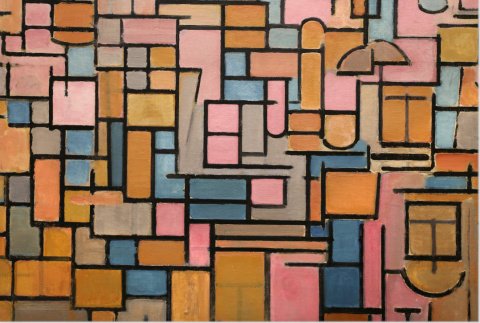
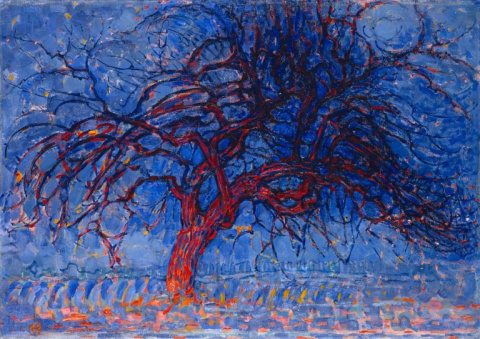
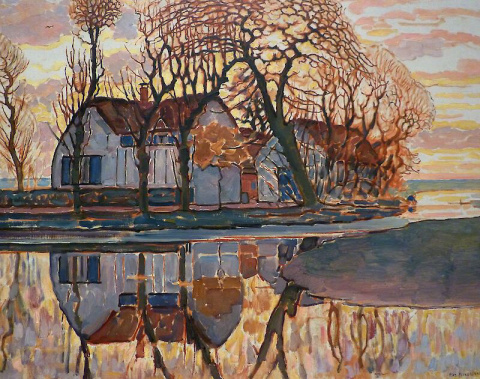
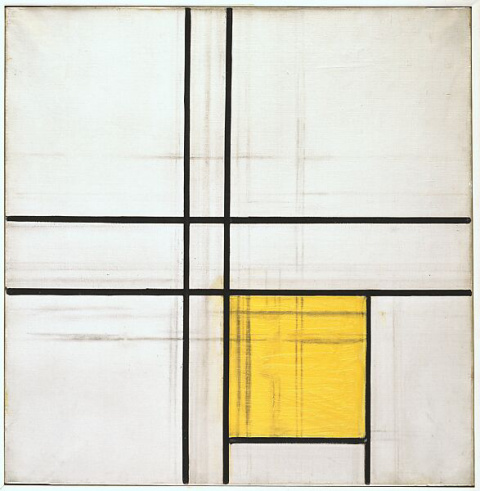
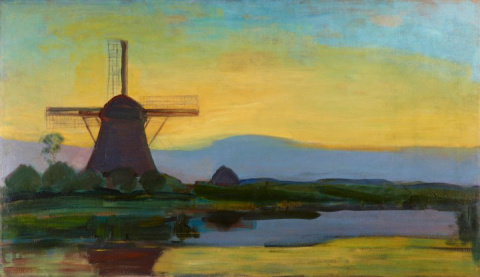
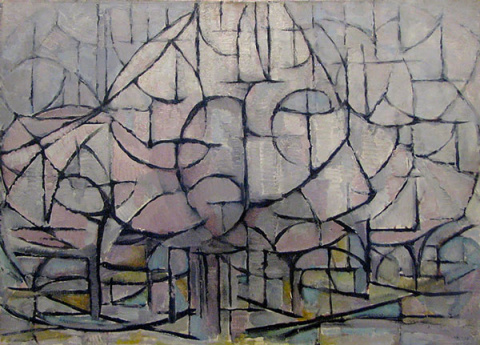
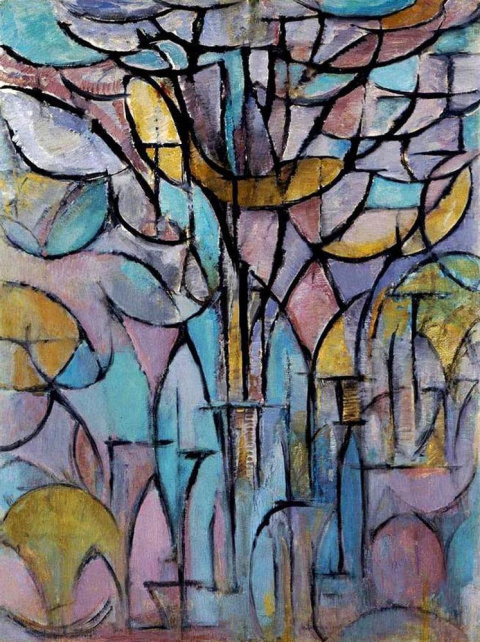
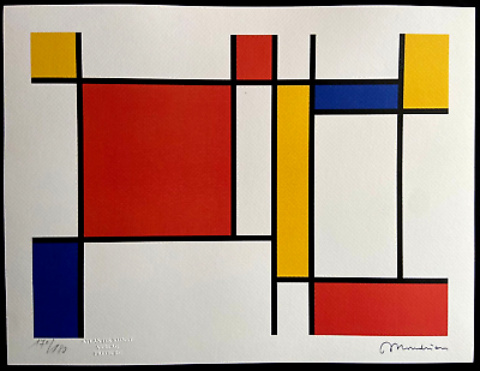
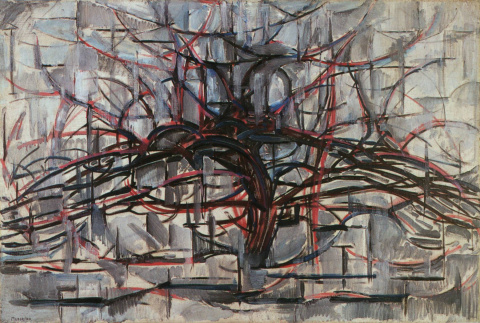

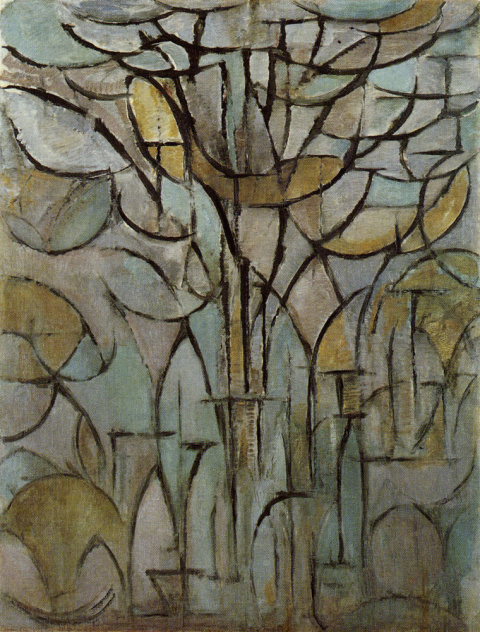
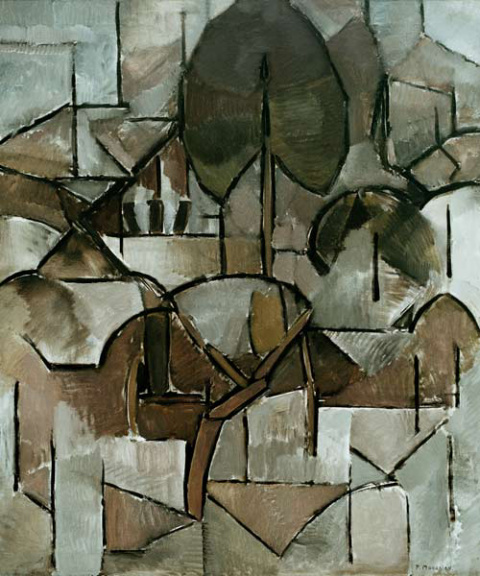
© Times of U

